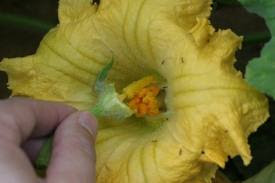On Monday, March 7, Bread for the World celebrated a successful #BreadRising capital campaign with a dinner featuring powerful reflections by Rev. Carlos Malavé (Christian Churches Together), Gayle Smith (U.S. Agency for International Development), Kelvin Beachum (professional football player and anti-hunger activist) and Rev. David Beckmann (Bread for the World). Talented musician Joy Ike also performed and offered a short reflection. Three remarkable individuals who have helped Bread in many ways with their time, talent and treasure were honored: Bob Cahill, Bob Ayres and Pat Ayres. Here are some impressions of the evening through the tweets of a couple of people who attended the celebration.
Adlai Amor
(the afternoon before the celebration)
Angela Ruprock-SchaferWe are excited to have @KelvinBeachumJr speak at the #BreadRising dinner tonight in D.C. #EndHunger2030 #Inspired pic.twitter.com/cpp6hjLv3D— Bread for the World (@bread4theworld) March 8, 2016
What an incredible honor tonight. Major donors, Senators and NFL players... Oh my!! @bread4theworld #endhungernow pic.twitter.com/MMK8RGCU2I— Angela R-Schafer (@AngRSchafer) March 8, 2016
That time I spazzed & closed my eyes for a pic next to the @USAID Administrator & an insanely talented musician... pic.twitter.com/RejwTyiES1— Angela R-Schafer (@AngRSchafer) March 8, 2016
Talk about awesome: @KelvinBeachumJr @dddailey @E_Mitch06 @marsmeg and fellow @bread4theworld family members!! pic.twitter.com/6nLvBs898A— Angela R-Schafer (@AngRSchafer) March 8, 2016
The incomparable @davidbeckmann of @bread4theworld speaking on the IMPACT of our work! Amen!! pic.twitter.com/XwLSCS6TQH— Angela R-Schafer (@AngRSchafer) March 8, 2016
Adlai Amor
I had to have a picture with #Steelers offensive tackle & @bread4theworld ambassador @KelvinBeachumJr pic.twitter.com/QVGvPOYNsB— Adlai Amor (@adlaiamor) March 8, 2016
.@bread4theworld founder Rev. Art Simon thanks Robert Cahill for his faithful service to #endhunger. pic.twitter.com/Tb1QAjIgy9— Adlai Amor (@adlaiamor) March 8, 2016
.@bread4theworld founder Art Simon thanks Bob and Pat Ayres for their faithful service to #endhunger pic.twitter.com/3YR7BwVeW4— Adlai Amor (@adlaiamor) March 8, 2016
(the afternoon before the celebration)
Honored to serve on the @bread4theworld Board with this group!! #SquadGoals #EndHunger #ZeroHunger @dddailey pic.twitter.com/kkZM5TDxJ2— Angela R-Schafer (@AngRSchafer) November 2, 2015












 The Aquaculture industry blossomed rapidly, and became a significant supplier of food over the last couple of decades. Aqua Farming is now practiced worldwide, each year it increases in scope and significance. The aquaculture industry grew out of necessity, the chief reason being that the traditional practice of hunting and gathering of food by fishing became unsustainable in many areas of the world. Read More Here
The Aquaculture industry blossomed rapidly, and became a significant supplier of food over the last couple of decades. Aqua Farming is now practiced worldwide, each year it increases in scope and significance. The aquaculture industry grew out of necessity, the chief reason being that the traditional practice of hunting and gathering of food by fishing became unsustainable in many areas of the world. Read More Here  An innovative combination of fish and vegetable farming methods that is experiencing renewed interest and rapid growth around the world is Aquaponics. This farming method is essentially the rebirth of age old practices and is now used to farm vegetables, herbs and fish synergistically. It is an eco-friendly way to naturally produce quality food for home use or for sale. This scalable farming method is being embraced by many small home growers and even large operations that are using the process and methods as a means of producing sustainable fish and plant crops. Read More Here
An innovative combination of fish and vegetable farming methods that is experiencing renewed interest and rapid growth around the world is Aquaponics. This farming method is essentially the rebirth of age old practices and is now used to farm vegetables, herbs and fish synergistically. It is an eco-friendly way to naturally produce quality food for home use or for sale. This scalable farming method is being embraced by many small home growers and even large operations that are using the process and methods as a means of producing sustainable fish and plant crops. Read More Here



































